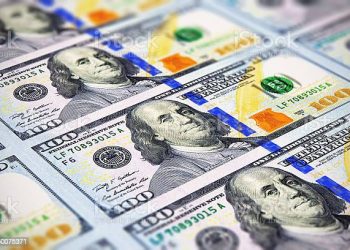The Nigerian naira reached an unprecedented low of N1,681 per U.S. dollar on the official Investor and Exporter (I&E) window on Tuesday, November 6, 2024. This new low, recorded on the FMDQ Exchange, underscores the ongoing struggles within Nigeria’s foreign exchange market, with the currency steadily depreciating against the dollar in recent months.
The latest drop follows Monday’s rate of N1,676.9/$1, itself a peak for the year, indicating a continuous and rapid devaluation. Market activity on Tuesday saw a total turnover of $196.7 million, down from Monday’s $218 million. Average daily turnover in November so far stands at $147 million, a significant decrease from October’s daily average of $245 million, highlighting reduced liquidity in the forex market.
Growing Parallel Market Gap
The parallel market rate, which currently stands at around N1,735/$1, remains significantly higher than the official rate, widening the gap between official and unofficial exchange rates. This disparity adds further pressure on the Central Bank of Nigeria (CBN) to manage liquidity as demand for the dollar consistently outpaces supply.
Nigeria’s external reserves, maintained at $39.9 billion according to the CBN, have provided some stability. However, they haven’t sufficed to halt the naira’s slide amidst persistent demand pressures.
Impact of U.S. Election Outcomes
This recent depreciation of the naira coincides with the U.S. presidential election, where former President Donald Trump returned to office after defeating Vice President Kamala Harris. Analysts expect Trump’s economic policies to impact Nigeria’s economy in various ways:
– **Energy Prices**: Trump’s history of supporting lower global energy prices could hurt Nigeria, an oil-dependent economy. If oil prices decline, Nigeria’s dollar inflows from oil exports may fall further, deepening the forex market imbalance.
– **Interest Rates**: Conversely, Trump’s tendency toward lower interest rates could boost global liquidity, encouraging foreign investors to seek higher yields in emerging markets like Nigeria. If this leads to increased dollar inflows, it may provide some support for the naira.
Persistent Challenges in 2024
The naira has depreciated by approximately 45% since the beginning of the year, making it one of the most devalued currencies worldwide. This steady decline reflects ongoing economic challenges, including high fiscal deficits and low capital inflows. Although diaspora remittances have risen to around $600 million monthly, the increase has not been enough to alleviate pressures in the forex market.
Concerns over Nigeria’s fiscal health, combined with unresolved issues surrounding the Dangote Refinery, further complicate the picture. Importers continue to rely on international markets for petroleum products, driving up dollar demand and exerting pressure on the naira.
Moving Forward: Calls for Policy Action
Experts suggest that without a significant boost in dollar inflows or a decrease in demand, the naira will continue to face headwinds. Policymakers are under pressure to introduce measures that could stabilize the currency, such as enhancing dollar liquidity and managing fiscal deficits more effectively.
For now, the naira’s ongoing depreciation serves as a stark reminder of Nigeria’s economic vulnerabilities in a volatile global environment.










